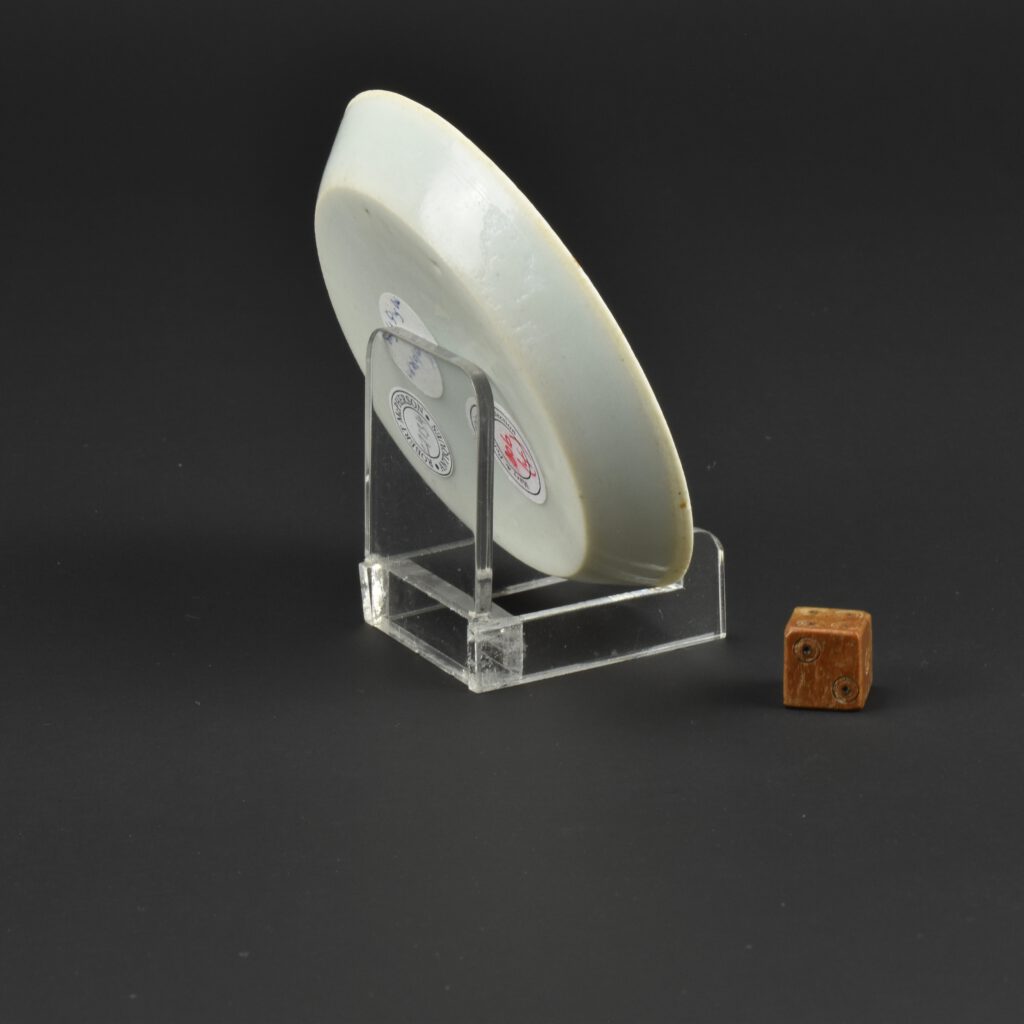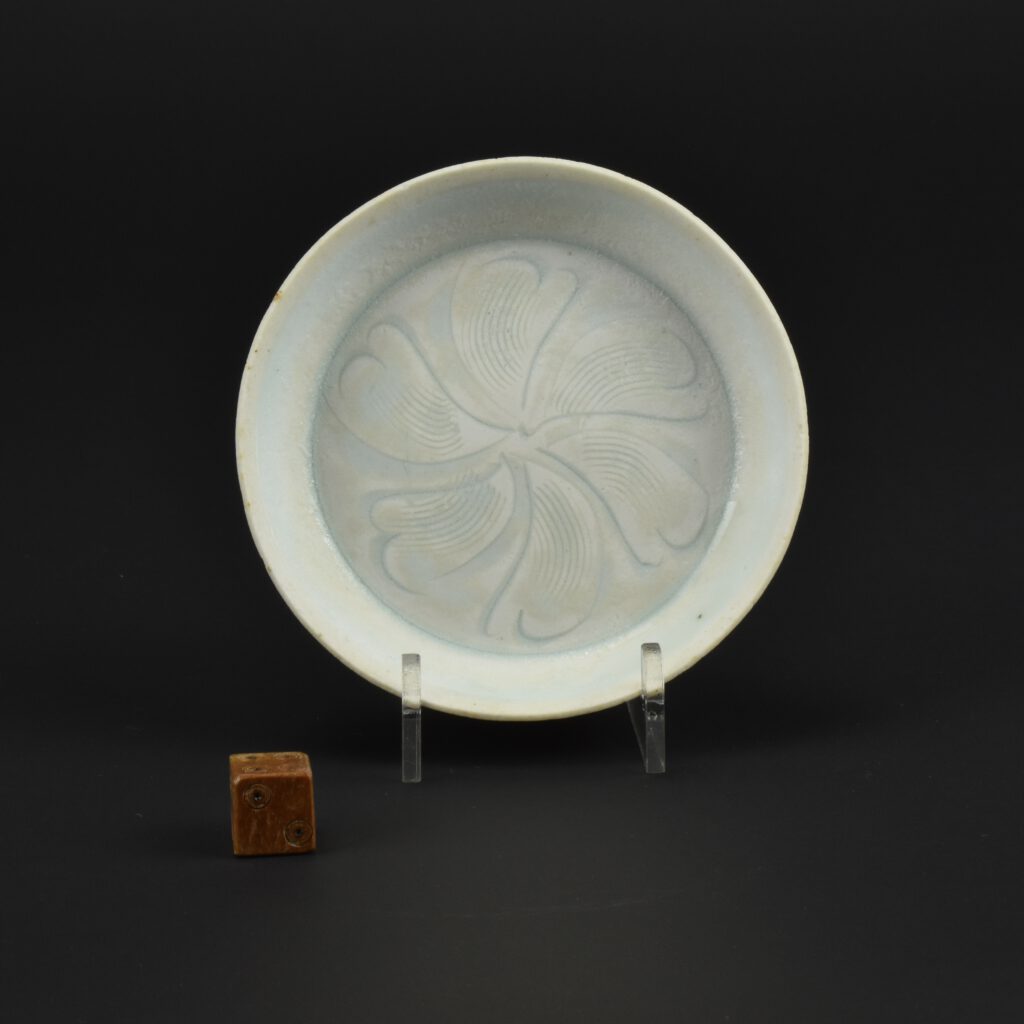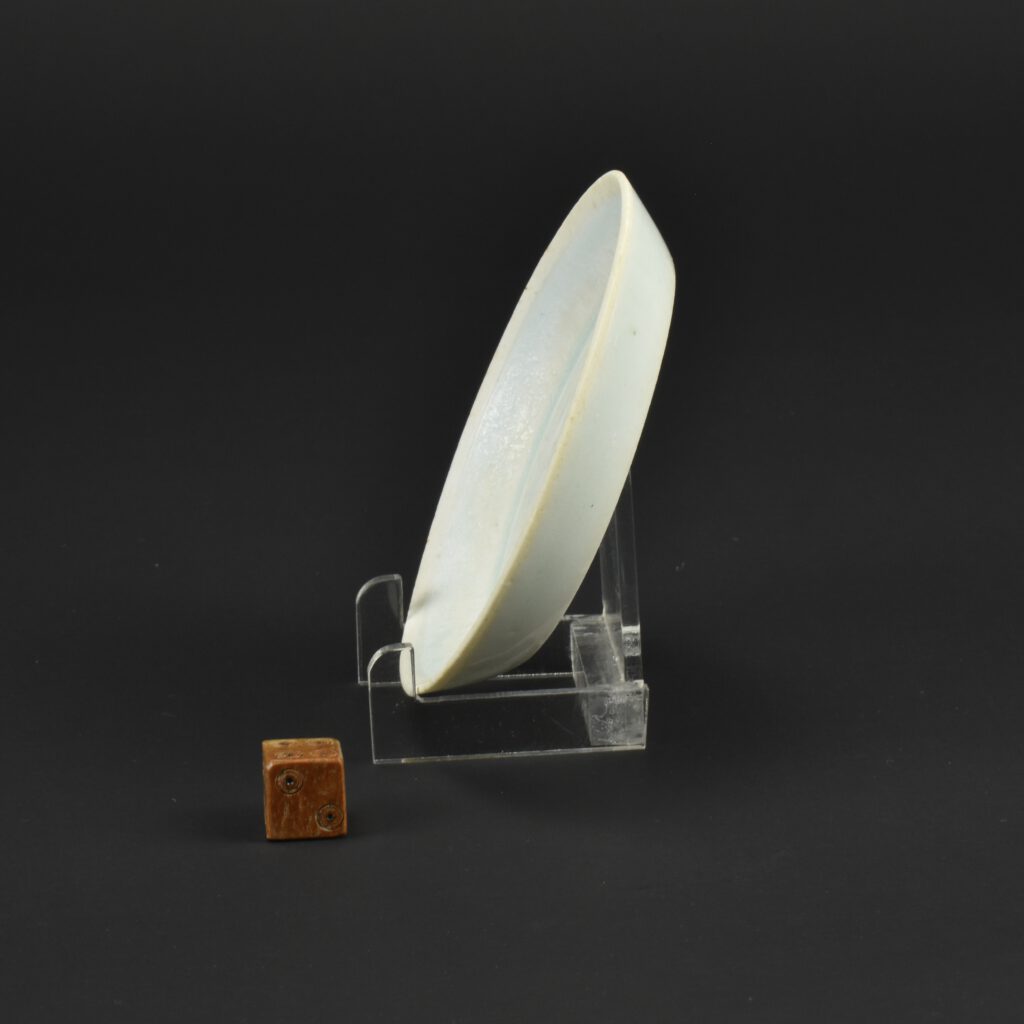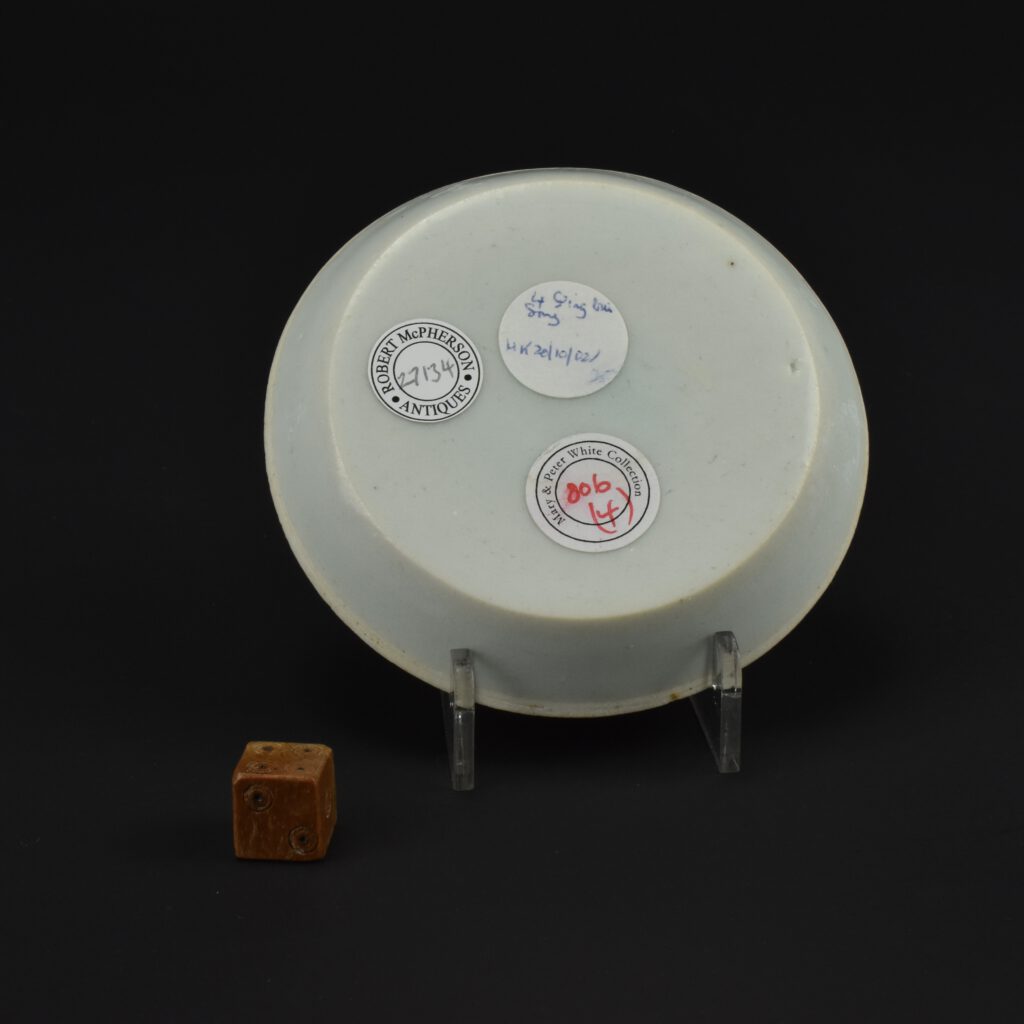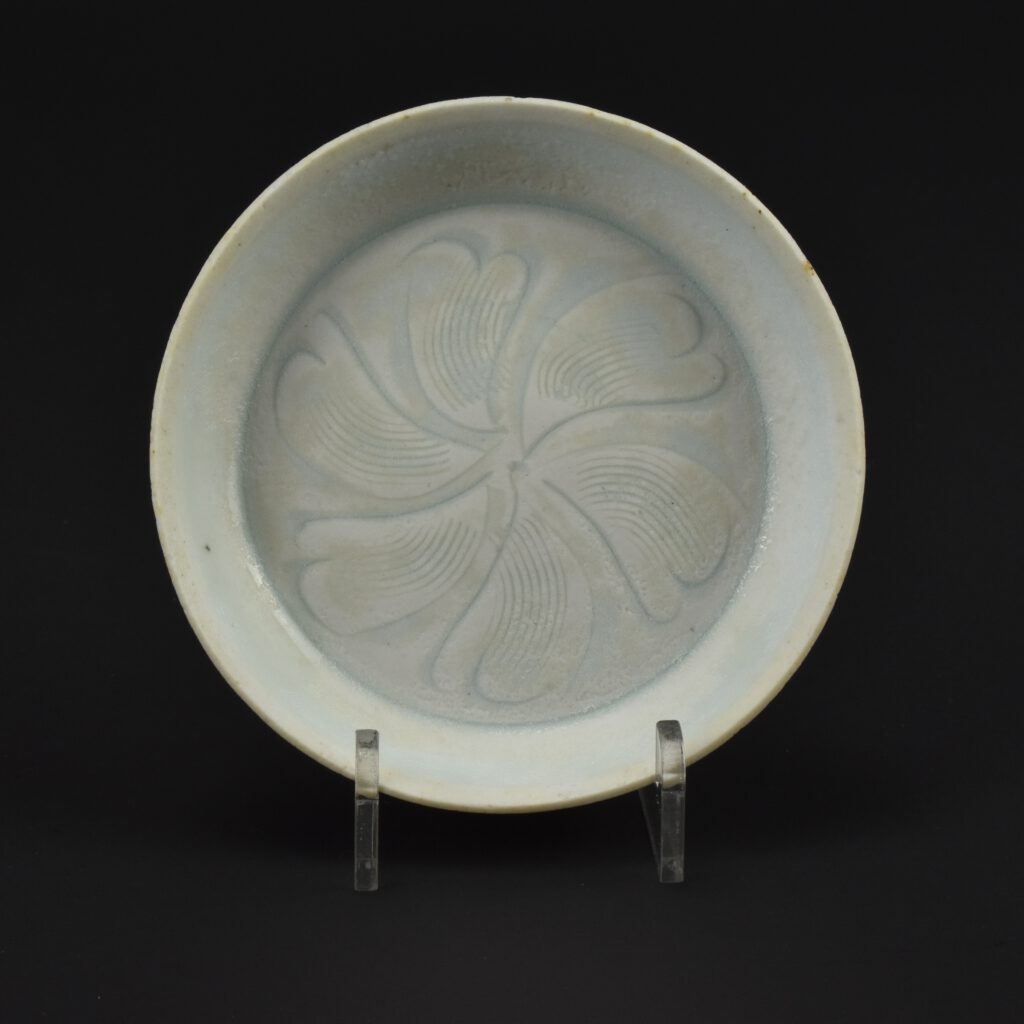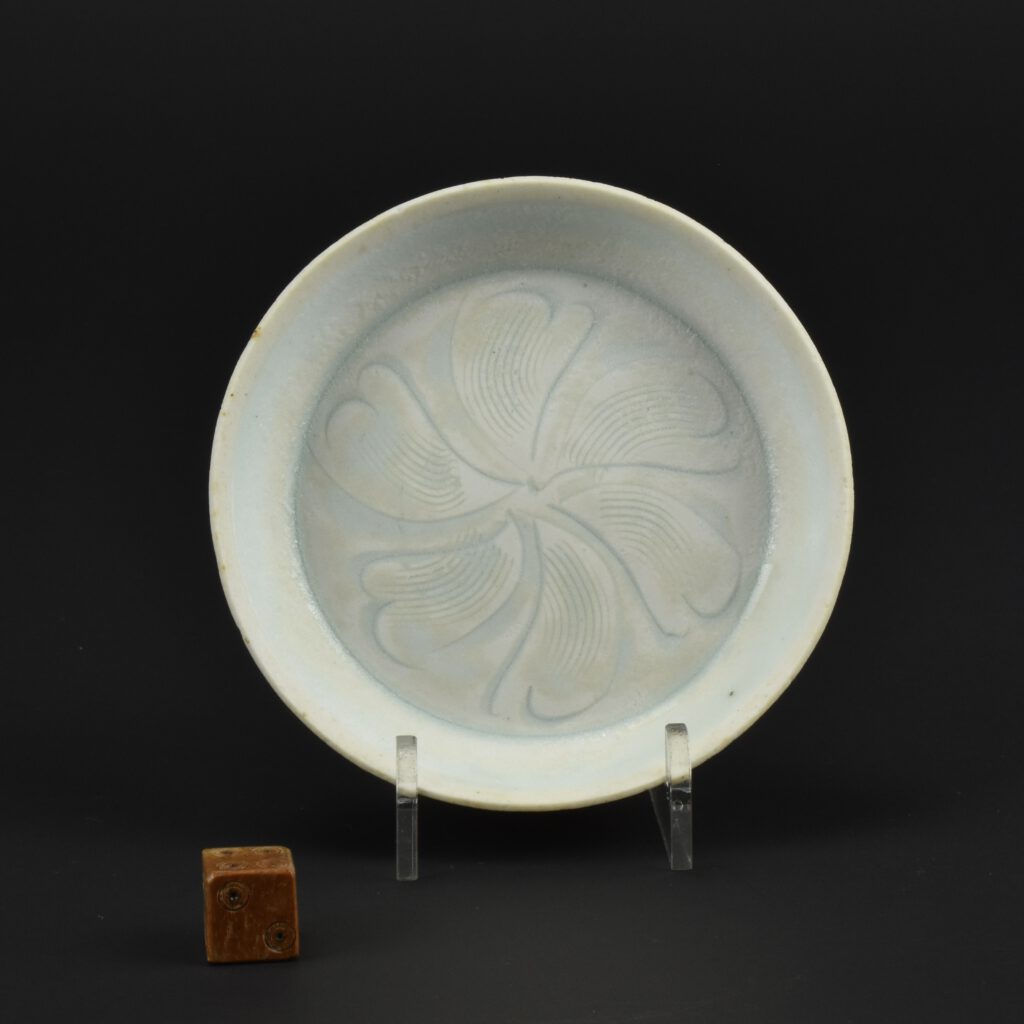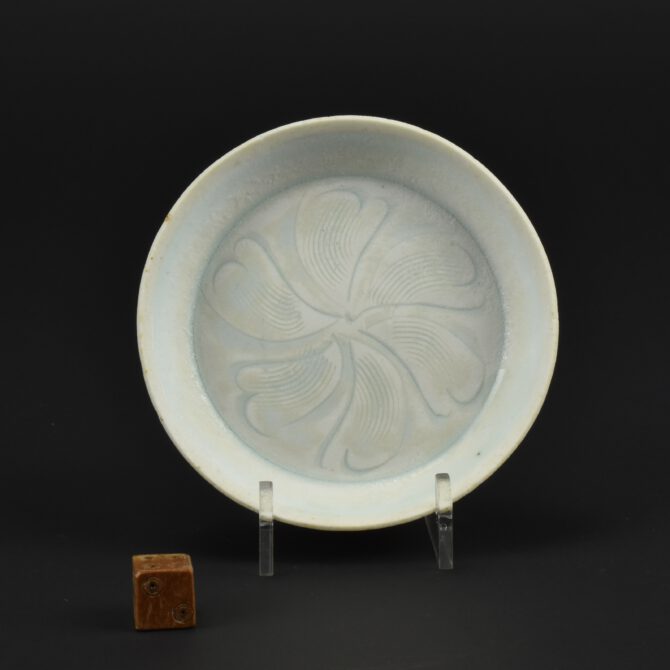
A Small Carved Song Qingbai Porcelain Dish
A Small Song Qingbai Ware Porcelain Dish, 12th century or 13th Century, probably from a kiln at Jingdezhen. This Song porcelain dish is has incised and combed decoration, comprising sis petals radiating from the center. This Qingbai ware dish sits on a flat glazed base and would have been supported in the kiln on its unglazed rim. The rim would have been wiped clean of glaze by the potter, later the rim would have been dressed in a thin sheet of metal.
See Below For More Photographs and Information.
SOLD
- Condition
- The glaze to the front is heavily pitted.
- Size
- Diameter 9 cm (3 1/2 inches).
- Provenance
- The Mary and Peter White Collection.
- Stock number
- 27134
- References
- For related examples see below the photograph gallery.
Information
A Related Carved and Combed Song Qingbai Dish
Robert McPherson Antiques - Sold Archive - 24935
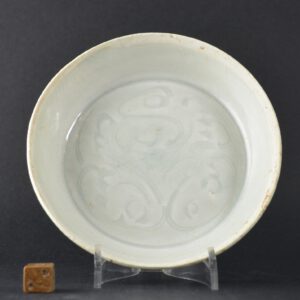
A Related but Moulded Song Qingbai Dish
Robert McPherson Antiques Sold Archive.
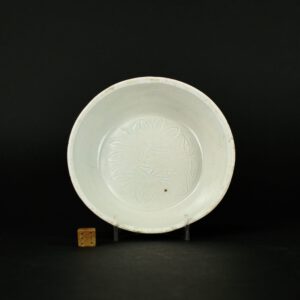
Qingbai Porcelain
The earliest known qingbai wares were produced in Jingdezhen in Jiangxi province around the late 10th century and are characterized by faint pale-blue glazes on low, wide forms. Qingbai continued to be enormously popular and highly produced throughout the Song dynasty (960-1279) and was prevalent in the Yuan dynasty (1279-1368), but slackened during the Ming dynasty (1368-1644) until being replaced by tianbai, ‘sweet white’ ware. The initial forms of qingbai were simple bowls and dishes, but by the mid-Northern Song the forms had advanced to include a wide variety of objects used for daily life such as ewers, boxes, incense burners, granary models, vases, jars, sculptures, cups, cupstands, water droppers, lamps, grave wares, and tools for writing and painting. The precedent for the majority of these forms is found in earlier metalwork and lacquer and Rawson has suggested that the imitation of silver was the primary force behind the production of white wares, including qingbai. See our `History` section for more information about Song Porcelain and Stoneware by Mindy M. McDonald.
